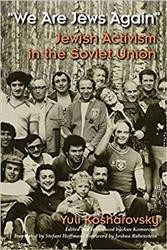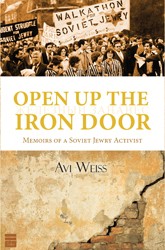For Jewish kids growing up in the United States and Canada during the 1960s and 1970s, the plight of Soviet Jews transformed the abstract Cold War into lived experience. At the bagel bakery and the neighbourhood newsstand, the pushke for our brothers and sisters behind the Iron Curtain vied with the blue-and-white JNF box. “Let My People Go” signs lined the main streets of Jewish neighborhoods, and “Free Soviet Jews” buttons were affixed to many jackets.
In this fascinating new book by American sociologist Shaul Kelner, we learn that none of this happened by accident. The Diaspora’s outpouring of support for the three million Soviet Jews trapped by what Martin Luther King referred to as “a kind of spiritual and cultural genocide” was the result of a tour de force of mass mobilization over three decades.
In the early 1960s, a synagogue book club in Cleveland, Ohio started following reports about semi-official antisemitism in the Soviet Union. Of particular concern to the group, which would later become the Cleveland Council on Soviet Antisemitism (CCSA), were the restrictive Soviet emigration policies and the plight of refuseniks. These were Jews, like Natan Sharansky, who had been refused permission to emigrate from the USSR, stripped of their jobs and civil rights, and hounded and often imprisoned by the KGB.
Following the example of the tireless CCSA, grassroots Jewish organizations — led mostly by Jewish suburbanites and synagogue congregants — began springing up all over the United States (and Canada and Great Britain), eventually uniting under the aegis of the Union of Councils for Soviet Jews (UCSJ). Few believed that they could directly force the Kremlin’s hand. As Kelner points out, “the USSR paid scant heed to its own citizens, why should the Politburo fold before a bunch of American or British or Canadian protestors?” What they could do was “mobilize the American Jewish populace to pressure major Jewish organizations to pressure the US government to pressure the Kremlin to let Jews emigrate.”
Much of that mobilization took the form of weaving the plight of Soviet Jews into every aspect of Jewish religious and cultural life. B’nai mitzvah kids were twinned with twelve- and thirteen-year-olds in places like Lviv and Sverdlovsk. Haggadot incorporated a contemporary narrative of oppression and redemption into the family seder. Youth groups and summer camps played live action role-playing games in which American teenagers outfoxed the KGB. College students, encouraged by the example of the Civil Rights Movement “to bring their politics to the streets” as “theatricalized, camera-ready protest,” led raucous “be-ins” at Soviet diplomatic missions. Under the noses of Intourist minders, package-touring, middle-aged Jews smuggled Levi’s (black-market gold!), prescription medicine, and siddurim to refuseniks, assuring them that they had not been forgotten and bringing back valuable documentation of their existence to the UCSJ and other umbrella groups. Even a decade-long boycott of PepsiCo, which began marketing soft drinks in the Soviet Union in 1974, gave Jewish shoppers “the opportunity to turn their consumer choice into a Jewish choice” when faced with the decision between Coke and Pepsi.
It worked. Through the 1970s, Jewish grassroots pressure on the US government forced it to tie the issue of Soviet Jews to everything from trade negotiations to arms limitation talks. “The movement succeeded in partially opening the gates,” writes Kelner, “ … by turning Jewish emigration into a symbol that Moscow could use to signal its desire for warmer relations with the West.” From the 1970s onward, thanks to the mobilization of Jewish communities in places like Cleveland, San Francisco, and Toronto, not only was Soviet Jewish emigration “imaginable … it was also feasible.” And by 1991, when the Soviet Union collapsed, hundreds of thousands of Jews had already left — for Israel, for the United States, and for Canada.
Cold War Exodus has real relevance in these times, as Jewish communities across North America contend with a profoundly disturbing upsurge in antisemitism. As we search for a counternarrative of our own, Kelner reminds us that we have a story to tell, and that grassroots mobilization is an effective means of telling that story. It can allow us to effect real change, and to do so in a way that is uniquely Jewish. In the words of Joe Hill, the great Swedish American labor activist, “Don’t mourn, organize.”
Angus Smith is a retired Canadian intelligence official, writer and Jewish educator who lives in rural Nova Scotia.





